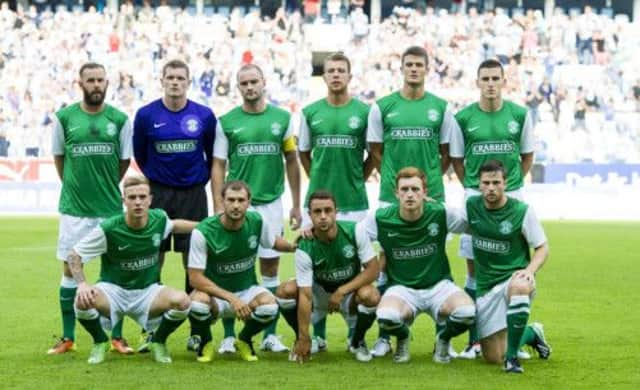Pat Fenlon can’t solve Hibs jigsaw puzzle


But we were children then, and the puzzle only cost 10p. And it was only a jigsaw puzzle. Not a football team made up of real people, acquired at considerable cost, and watched every week by thousands more who hope that one day soon all those pieces will at last fall into shape.
Because that’s what the Hibernian squad is right now: a collection of ill-fitting individuals with little discernible pattern. And what’s worse, this is far from the first time that Pat Fenlon has been allowed to go shopping in search of success.
Advertisement
Hide AdAdvertisement
Hide AdWe can forgive the Hibs manager some of the signings he made in his first few months in the job, because with his new club threatened by relegation there was little he could do other than roll the dice.
The Hibs fans themselves would not be so forgiving after the role played by the likes of Matt Doherty and Tom Soares in the 2012 Scottish Cup final rout by Hearts, but at least Fenlon succeeded in his primary task, thanks in large part to the acquisition of James McPake.
The six months following his arrival in November 2011 were always going to be phase one of Fenlon’s two-and-a-half-year contract. The next two years were expected to be about something longer term: the reconstruction of his squad into something capable not just of avoiding the drop, but of competing towards the top of the SPL.
Two of his signings in the summer of 2012, Gary Deegan and Paul Cairney, looked good at first. Yet both fell out of favour, and Deegan has now left the club while Cairney is out injured.
But let’s put that down to experience, too. Let’s ignore what went wrong last season, and concentrate instead on what Fenlon did this summer. Hibs chairman Rod Petrie certainly seems to have done that, as he effectively gave his manager a substantial vote of confidence during the close season by sanctioning the recruitment of eight players (and a new assistant manager in Jimmy Nicholl).
Not all of the eight were Fenlon’s or Petrie’s original choices, of course. Hibs’ major hope for the close season was that they could prise Leigh Griffiths, scorer of 28 goals for them during the last campaign, away from Wolves. It is thought Petrie had already tried to do that in January, with Griffiths midway through his second season on loan from the English club and apparently out of favour with them. But that attempt failed, and there was the same lack of success in the summer.
Lyle Taylor of Falkirk was the next target, but that failed too, and the Englishman moved to Sheffield United instead. In the cases of both Griffiths and Taylor it could be argued that a little more cash would have tipped the balance in Hibs’ favour, and Petrie should certainly take a lot of responsibility for Hibs’ shortcomings in the transfer market. But the fact remains, Petrie allowed Fenlon to sign more than half a team over the summer. No matter how good Griffiths is, no matter how many shortcomings the manager thought he had elsewhere in his squad, buying in eight new bodies should be enough to overcome at least some of the difficulties.
Liam Craig, Owain Tudur Jones, Michael Nelson, Rowan Vine, James Collins and Fraser Mullen were all new recruits, Kevin Thomson came back after a short-term deal last season, and Ryan McGivern signed on as a Hibs player after being on loan from Manchester City. Still only 19, former Hearts full-back Mullen is inexperienced, but the others are all seasoned professionals who moved to Easter Road with reasonable reputations.
Advertisement
Hide AdAdvertisement
Hide AdAnd yet all eight played at Tynecastle on Sunday as Hibs lost 1-0 to a youthful Hearts team. Thomson was the best player for his side, and a couple of others looked solid enough for most of the game. But collectively they were ineffectual. If there was a gameplan, they appeared not to have understood it.
Without Griffiths, goals are a major problem. Without the injured Alex Harris, the lack of pace is a glaring fault. But Fenlon still has a host of players who have been good enough with their previous clubs. It’s where they fit in that’s proving difficult, particularly in the case of the midfielders, of whom there are simply too many.
In any event, the problem is not just with the new recruits. When McGivern came on for Mullen at the start of Sunday’s second half, the left-footed Lewis Stevenson was moved to right-back. That has been tried before, and has been unsuccessful before.
What is more, Fenlon is running the risk of undoing some of his own limited progress with his new signings. Young centre-half Jordon Forster, for example, was a model of composure in his first few games for Hibs last season, but was on the bench at the weekend, having apparently been pushed down the pecking order by the 33-year-old Nelson.
Given cases like that, it could be argued that not only is Fenlon failing to make progress, he is actually going backwards. There is no footballing case for keeping him, and only the fear of further upheaval plus the risk of damage to his own reputation are deterring Petrie from wielding the axe.